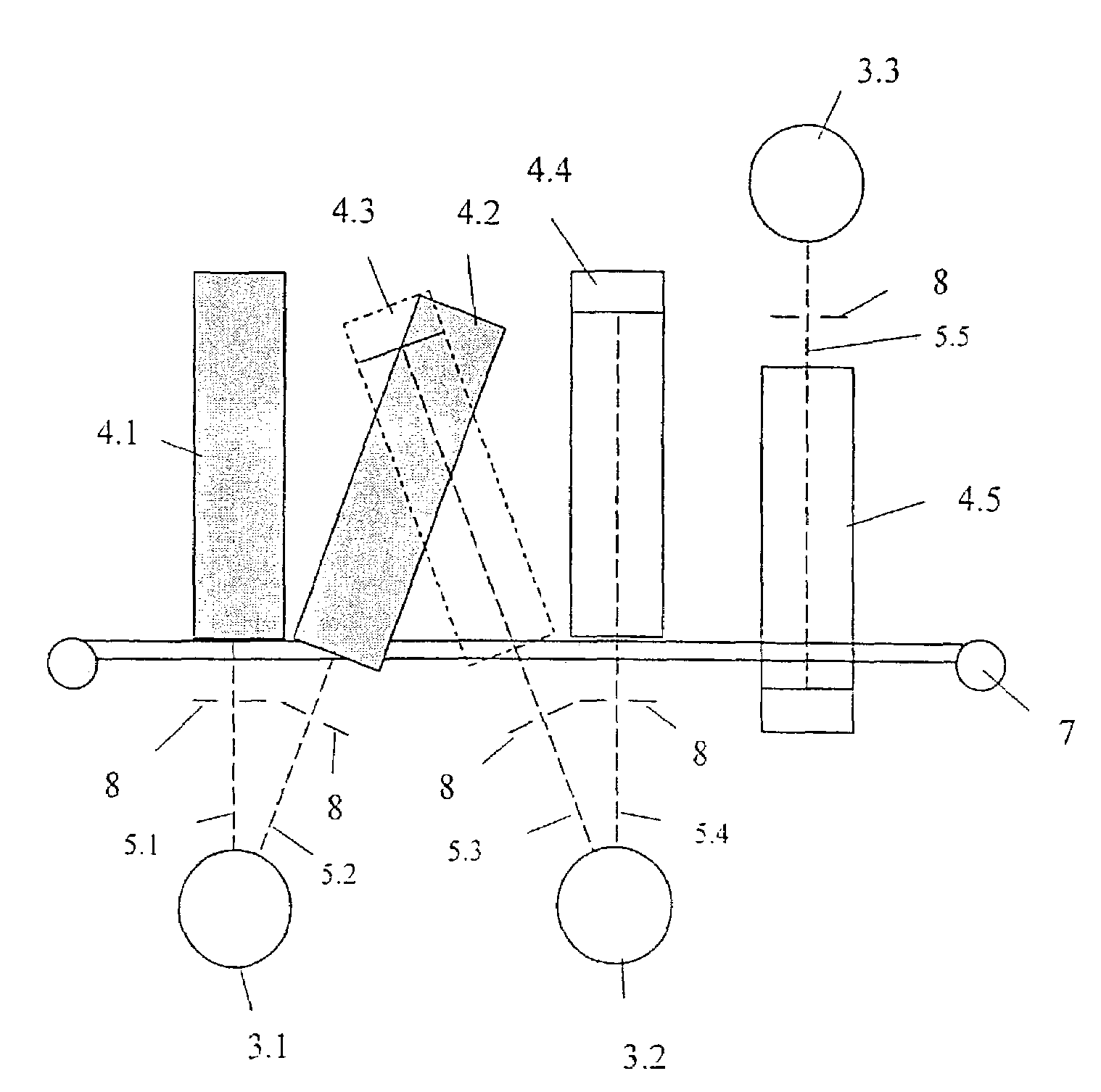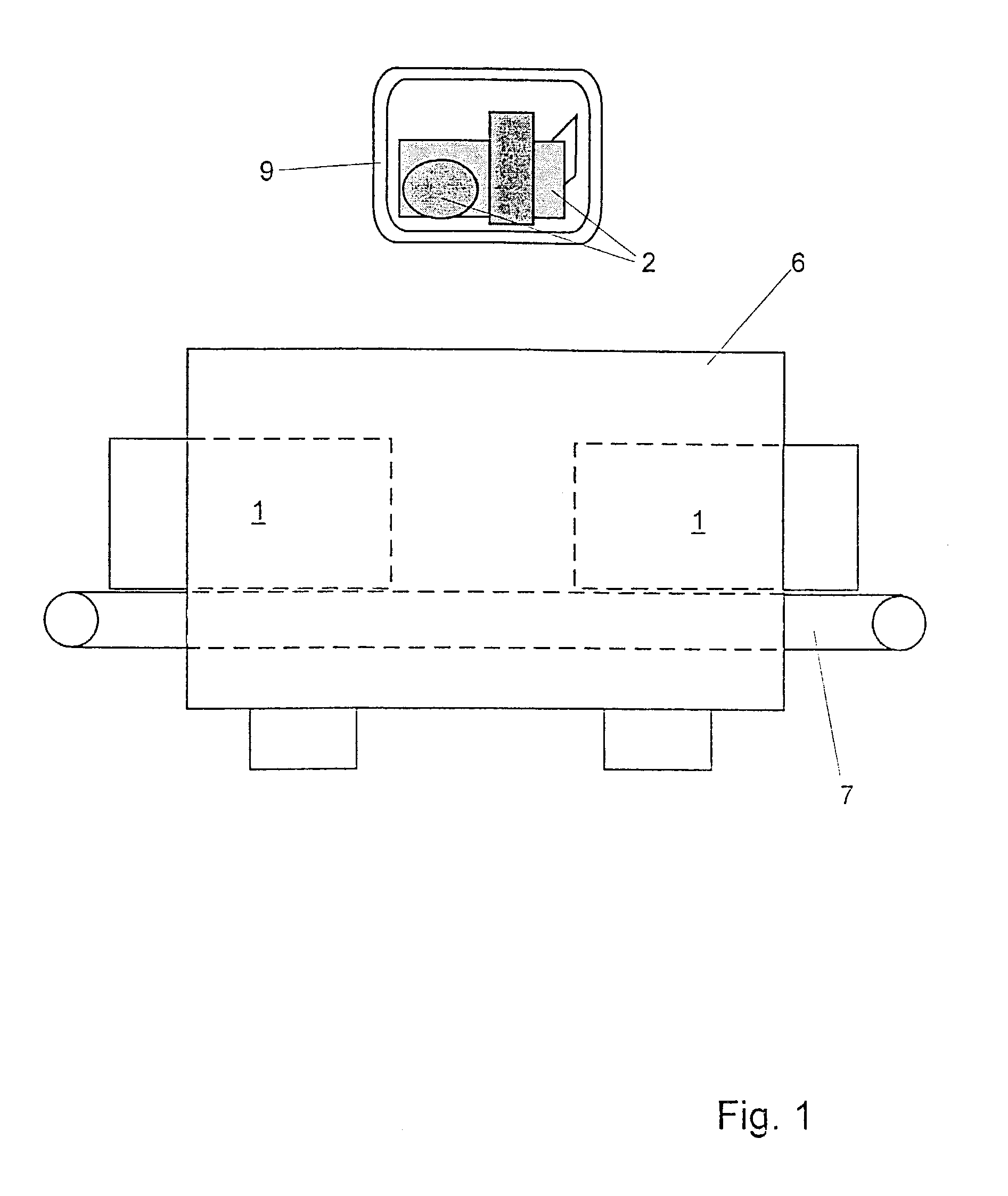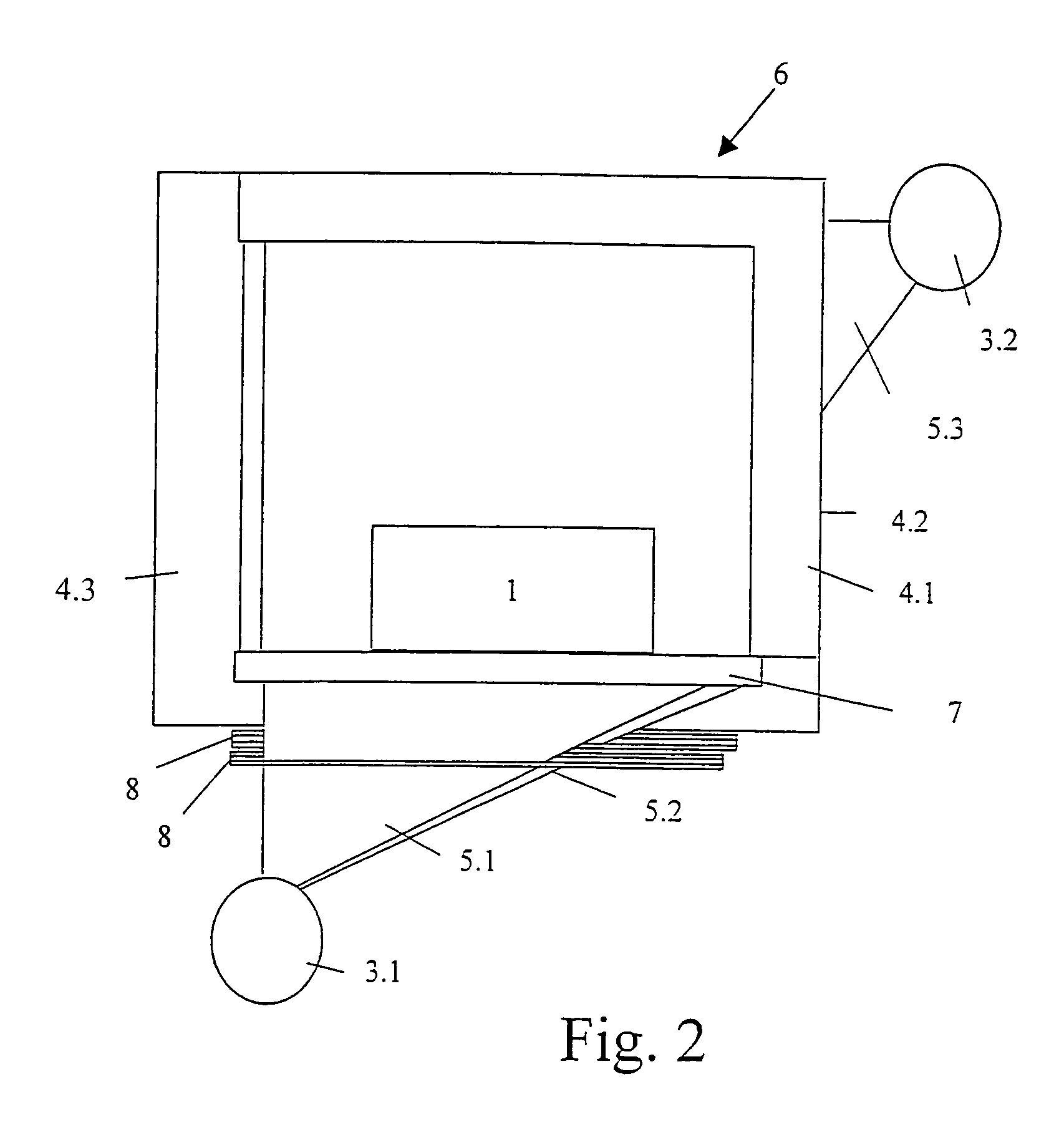Method and device for detecting a given material in an object using electromagnetic rays
a technology of electromagnetic rays and objects, applied in the direction of material analysis using wave/particle radiation, using wave/particle radiation means, instruments, etc., can solve the problems of incomplete complex objects and inability to reconstructed with sufficient resolution, so as to achieve the lowest possible number of radiation sources and ensure the effect of high security
- Summary
- Abstract
- Description
- Claims
- Application Information
AI Technical Summary
Benefits of technology
Problems solved by technology
Method used
Image
Examples
Embodiment Construction
[0025]The inspection device illustrated in the figures is used for security screening of objects 1, particularly pieces of luggage, as done at airports, whereby the articles 2 located in the pieces of luggage are screened for their security relevance.
[0026]Essential components of the device are stationary radiation sources 3.1–3.3 and corresponding detectors 4.1–4.5, from which the intensities of the non-absorbed beams are measured. The radiation sources 3.1–3.3 are positioned in such a way that the objects 1 are transilluminated in different directions to receive the greatest possible independent data. For that purpose, the radiation sources 3.1–3.3 are positioned in the travel direction of the objects 1, spaced one after the other and positioned on different sides of the radiation tunnel 6, through which the objects 1 are transported on a transport device, preferably a conveyor 7.
[0027]Beams are projected from at least three, preferably fan-shaped, beam planes 5.1–5.5 for the radi...
PUM
 Login to View More
Login to View More Abstract
Description
Claims
Application Information
 Login to View More
Login to View More - Generate Ideas
- Intellectual Property
- Life Sciences
- Materials
- Tech Scout
- Unparalleled Data Quality
- Higher Quality Content
- 60% Fewer Hallucinations
Browse by: Latest US Patents, China's latest patents, Technical Efficacy Thesaurus, Application Domain, Technology Topic, Popular Technical Reports.
© 2025 PatSnap. All rights reserved.Legal|Privacy policy|Modern Slavery Act Transparency Statement|Sitemap|About US| Contact US: help@patsnap.com



